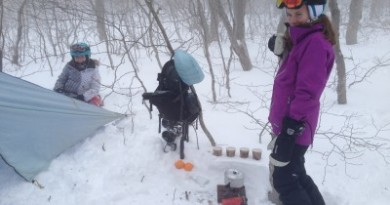Getting Ahead of the Climate Curve
Getting Ahead of the Curve on the Climate Crisis
As the 18-year majority owner of Sugarbush Ski Resort and now its current President, as well as the incoming board chair for The Nature Conservancy in Vermont, I had the opportunity to testify before the House Energy and Technology Committee regarding the impacts of climate change in our state and why it is so important to support the Vermont Global Warming Solutions Act (H.688).
We are all aware of the economic importance of the winter sports industry to our economy and culture. Yet our industry is facing challenges brought on by the climate crisis. I believe that we need to get ahead of the curve on our climate challenges in order to remain sustainable and continue to thrive.
I understand that what we do in Vermont is miniscule compared to global carbon emissions, especially from coal in the US, China, and India. But it is critically important that we do our part. It is the right thing to do and is increasingly what our guests and visitors expect, especially younger generations.
At Sugarbush we have undertaken numerous initiatives that focus on energy efficiency. For example, in 2001 we used five 6,000-cubic-foot-per-minute air compressors and diesel generators in order to have enough compressed air to make snow. Now we use two generators that use no more than 4,200 CFM each, reducing annual consumption by nearly 5 million kWh. We partnered with Green Lantern Solar on the development of five solar fields that generate 2.5 megawatts. We installed twenty-two electric vehicle charging stations. We are also more outspoken advocates for climate action and support Protect Our Winters and 1% for the Planet.
I get asked all the time, “Are you seeing less snow?” or “Is your season getting shorter?” The answer is “No” and this might lead someone to say, “See, there is no climate change.” I wish to emphatically state that this is the wrong conclusion.
We are experiencing significantly greater volatility in the weather. Already this season, we have experienced five roller-coaster weather events with warm-ups and rain followed by cold and snow. There has always been a January thaw in Vermont but five thaws by mid-January is not normal. We are also experiencing higher velocity winds and greater storm intensity throughout the year.
What does this mean for our business and what do we have to do to be prepared for these increasingly volatile conditions?
In the past we had overhead lines that brought power to our upper lifts and snowmaking motors. But with unusually high winds that are increasing in frequency and severity, these lines have become vulnerable forcing us to bury them to prevent future damage at a cost of over $400,000.
Winter thaws create another risk, motivating us to consider a replacement snowmaking dam at a cost of $1 million. Unusual warm-weather cycles are causing more ice jams undermining the dam foundation. If it were to break in midwinter, we would be without snowmaking at a critical time. Therefore, we are planning to replace it with an inflatable dam that can be deflated and re-inflated after a storm.

When Irene devastated Vermont in 2011, our snowmaking pond was destroyed. We had just enough time to replace it in time for opening day. Rebuilding the pond was a $1 million uninsured expense for us.
Most Vermont ski areas have invested in snowmaking for decades. But we anticipate that we will continue to see shorter windows of snowmaking temperatures as the climate changes. This will require sizeable investments to increase our snow making capacity when temperatures allow. At Sugarbush, we can produce 6,500 gallons per minute (GPM) but plan to increase this to 8,000-9,000.
It is clear that climate change is already impacting the winter sports industry. We need to get in front of this crisis. We cannot wait for slow policy and bureaucratic red tape. We must act on climate now.
Until Vermont has developed sufficient battery storage capabilities to support a complete renewable energy economy, we should take the following steps:
- Encouraging natural climate solutions such as protecting forests from development and fragmentation, promoting reforestation, restoring wetlands, and encouraging healthier soils to capture and store carbon.
- Improving public transportation to reduce our dependence on personal vehicles.
- Installing more charging stations to promote electric vehicle ownership.
- Continuing to promote appropriately scaled solar development while eliminating the cumulative net metering cap.
- Expanding the ability of Efficiency Vermont to fund additional projects.
- Educating guests and residents about climate change. As an example, Sugarbush is hosting a climate panel on Saturday, February 22.
We are a small state but have the will and the ability to be a leader in tackling climate change. The Vermont Global Warming Solutions Act is one of the critical weapons in this fight.
Win Smith
Trustee Nature Conservancy Vermont
President, Sugarbush Resort




Pingback: What Skiers Can Do For Climate Change – VT SKI + RIDE